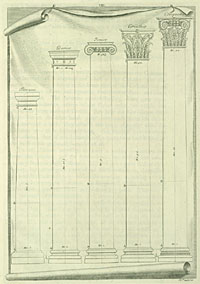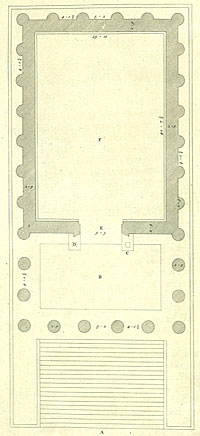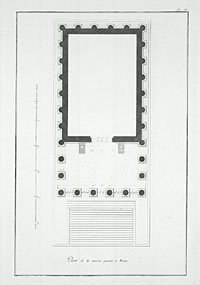
"The Orders" from Book 1, The Architecture of A. Palladio in four books. Andrea Palladio. 2d ed. London; John Darby, 1721. Bound volume. Library of Virginia.
Jefferson and Architectural Books
As a young man Thomas Jefferson (1743-1826) trained himself to be an architect. His reading taught him a basic premise of European culture, the principle that the Greeks and Romans had established the basis for all the arts. The ancient principles of architecture differed sharply from the buildings that Jefferson saw around him in Virginia. He understood that he had to become an architect himself if he was to have a house that embodied the correct principles of architecture. Jefferson designed public buildings and private houses as models to reform the taste of the colonies and the new nation. His pivotal effort at monumental civic architecture was the Virginia State Capitol, for which he started his first design about 1772-1776, and his second and third designs in 1785.
Jefferson combined lessons from Virginia buildings with what he learned from European books. Americans had often designed new structures based on existing buildings and modeled architectural details on illustrations in imported books. Jefferson turned to the buildings that stood around him for practical lessons in planning, and he consulted European books for lofty architectural principles and ornaments. Shortly after publishing his Notes on the State of Virginia, Jefferson began his second design for the Virginia State Capitol. He envisioned the Capitol as embodying the great tradition in Western monumental architecture, built of enduring masonry and employing the Orders as the principal ornament.

"The Maison Carrée" from Book 4, The Architecture of A. Palladio in four books. Andrea Palladio. 2d ed. London, 1721. Digital reproduction of engraving. Library of Virginia.

"Maison Carrée" from Antiquités de la France.
Charles-Louis Clérisseau. Paris. Bound volume. Library of Virginia.